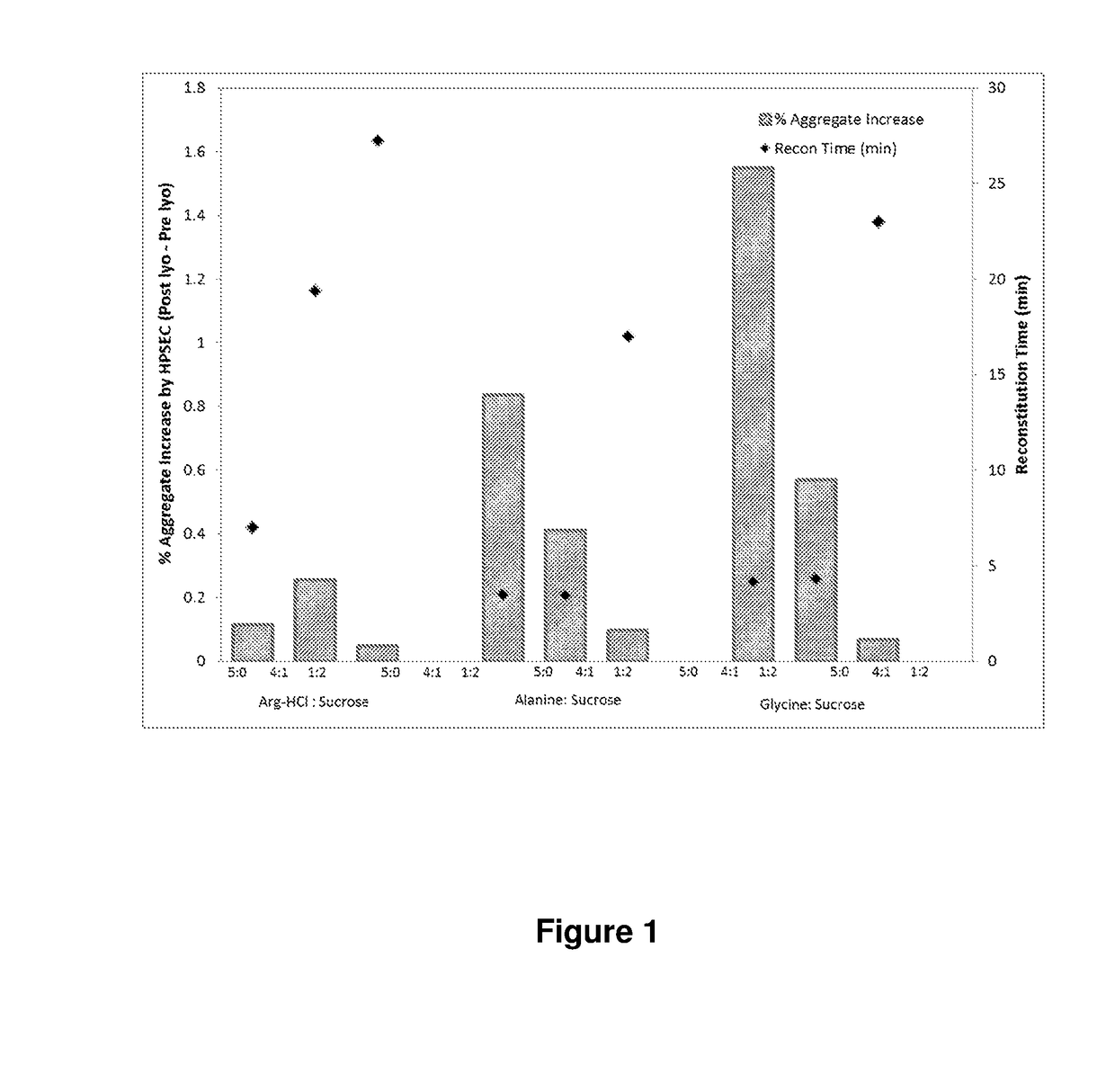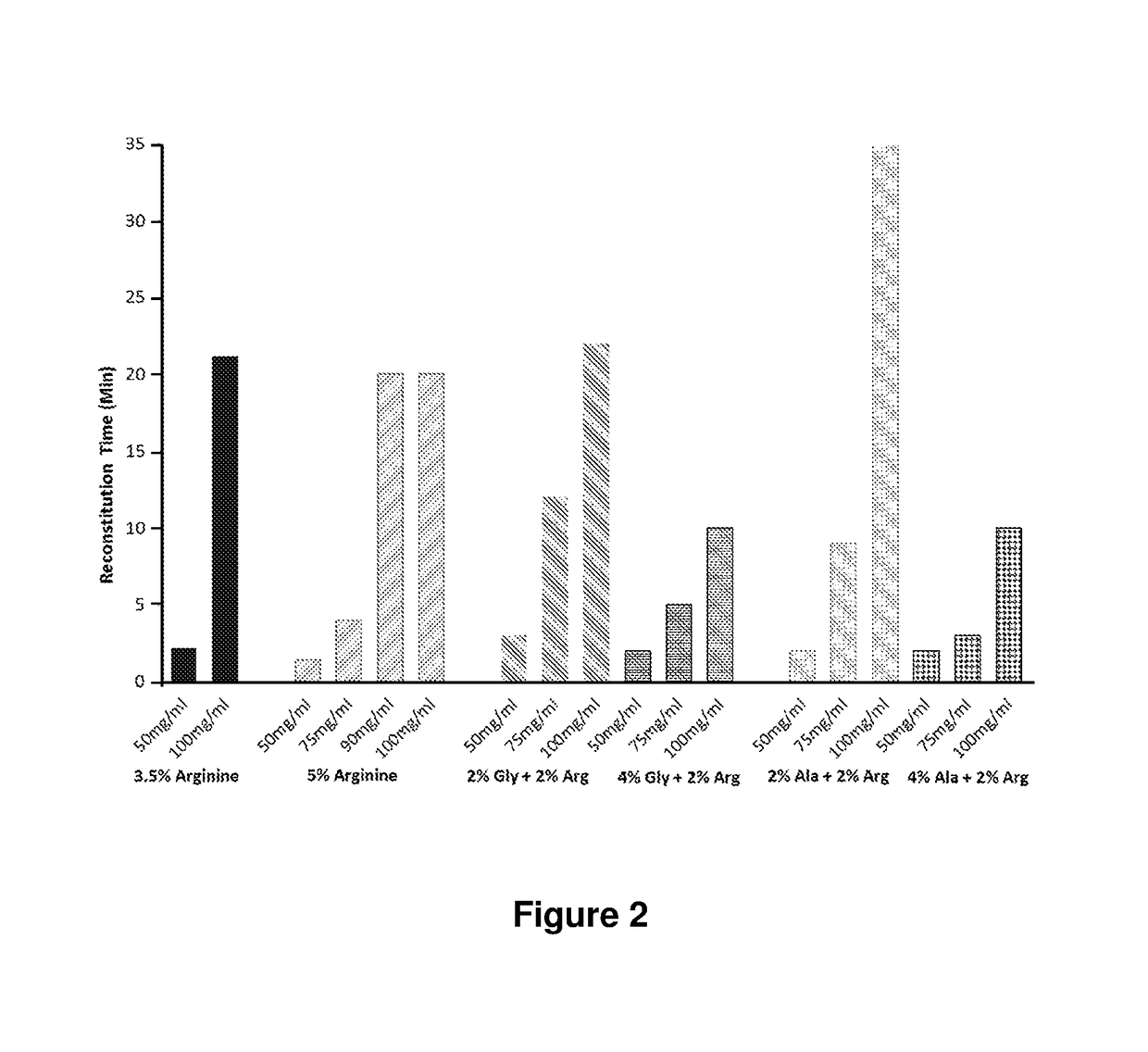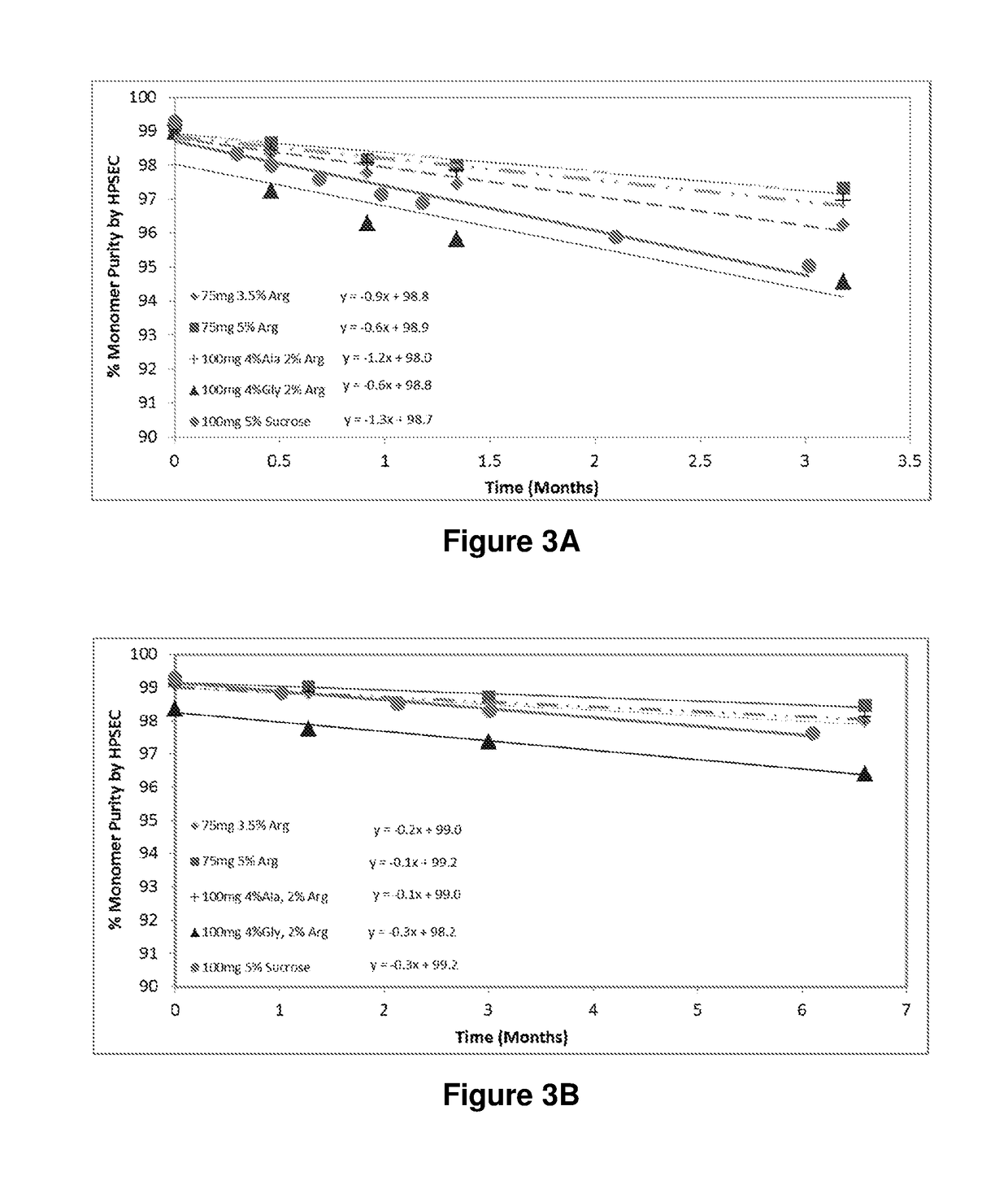Use of amino acids as stabilizing compounds in pharmaceutical compositions containing high concentrations of protein-based therapeutic agents
a technology amino acids, which is applied in the direction of antibody medical ingredients, peptide/protein ingredients, inorganic non-active ingredients, etc., can solve the problems of protein-based therapeutic agents experiencing operational instability, physical instability that is often encountered upon their storage, etc., to improve and/or maintain the long-term stability of protein biomolecules, improve the effect of treatment, management, and prevention
- Summary
- Abstract
- Description
- Claims
- Application Information
AI Technical Summary
Benefits of technology
Problems solved by technology
Method used
Image
Examples
example 1
Materials & Methods
[0081]Lyophilization—1.1 mL aliquots of a pharmaceutical composition were introduced into 3 cc glass vials. The vials were stoppered with 13 mm single vent lyophilization stoppers. The vials were then lyophilized using a lyophilization cycle, as described in Table 3.
TABLE 3Lyophilization ParametersLoading 20° C.Freezing −5° C. at 0.3° C. / minAnnealing−16° C. at 0.5° C. / minFreezing−40° C. at 0.5° C. / minPrimary Drying−35° C. at 0.1° C. / minSecondary Drying 40° C. at 0.3° C. / minUnloading 5° C.
[0082]The end point of lyophilization was determined using a Pirani vacuum gauge (see, e.g., Patel, S. M. et al. (2009) “Determination of End Point of Primary Drying in Freeze-Drying Process Control,” AAPS Pharm. Sci. Tech. 11(1):73-84). Such a gauge works on the principle of measuring the thermal conductivity of the gas in the drying chamber (Nail, S. L. et al. (1992) “Methodology For In-Process Determination Of Residual Water In Freeze-Dried Products,” Dev. Biol. Stand. 74:1...
example 2
Impact of Variation of Amino Acid to Sugar Ratio on Reconstitution Time and Protein Aggregation of Pharmaceutical Compositions
[0085]In order to investigate the effect of varying the ratio of amino acid to sugar concentrations in pharmaceutical compositions on the preparation, stability and storage of such compositions, a pharmaceutical composition containing an exemplary protein biomolecule (a human IgG1 monoclonal antibody) was incubated in formulations containing different amino acids and at differing amino acid to sugar ratios. More specifically, the pharmaceutical composition was formulated at 100 mg / mL in 25mM histidine / histidine-HCl, 0.02% (w / v) polysorbate-80 (PS-80), pH 6 buffer with arginine-HCl, lysine-HCl, proline, alanine or glycine at amino acid to sugar ratios as shown in Table 4 and the preparations were evaluated for their effect on reconstitution times of the lyophilized formulations.
TABLE 4Composition of Amino Acid FormulationsAminoProteinAmino AcidAcid:SucroseDesc...
example 3
Optimizing Sugar to Amino Acid Ratios in High Concentration Protein Formulations
[0090]The data presented in Example 2 indicates that both alanine and glycine have a tendency to crystallize when lyophilized alone or in the presence of low amounts of sugar. The following study was carried out to optimize ratios of sugar to amino acid (using alanine or glycine) to obtain amorphous lyophilized cakes with acceptable stability and short reconstitution times. Amino acid / sucrose formulations with various amino acid to sugar ratios were prepared for both alanine and glycine as shown in Table 7. The formulations were lyophilized according to the process shown in Table 5 with addition of annealing at −16° C. for 300 minutes. The lyophilisates were subjected to XRPD, and were then reconstituted. Reconstitution times, percent aggregate increase over pre lyophilization solutions, and osmolality were measured.
TABLE 7Amino AcidSugarAmino Acid to(mg / mL)(mg / mL)Sugar Ratio5005:040104:140202:140304:340...
PUM
| Property | Measurement | Unit |
|---|---|---|
| concentrations | aaaaa | aaaaa |
| concentration | aaaaa | aaaaa |
| concentration | aaaaa | aaaaa |
Abstract
Description
Claims
Application Information
 Login to View More
Login to View More - R&D
- Intellectual Property
- Life Sciences
- Materials
- Tech Scout
- Unparalleled Data Quality
- Higher Quality Content
- 60% Fewer Hallucinations
Browse by: Latest US Patents, China's latest patents, Technical Efficacy Thesaurus, Application Domain, Technology Topic, Popular Technical Reports.
© 2025 PatSnap. All rights reserved.Legal|Privacy policy|Modern Slavery Act Transparency Statement|Sitemap|About US| Contact US: help@patsnap.com



